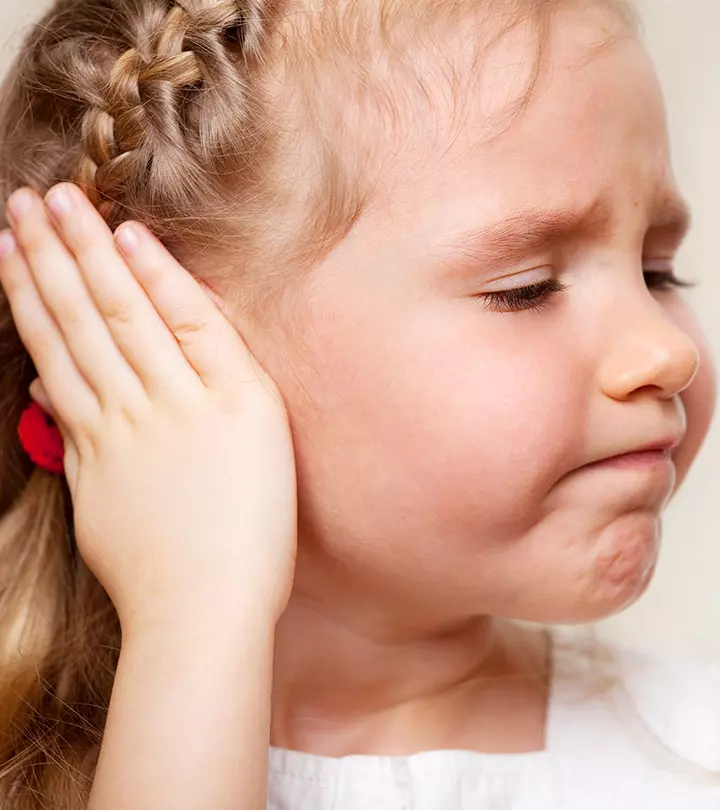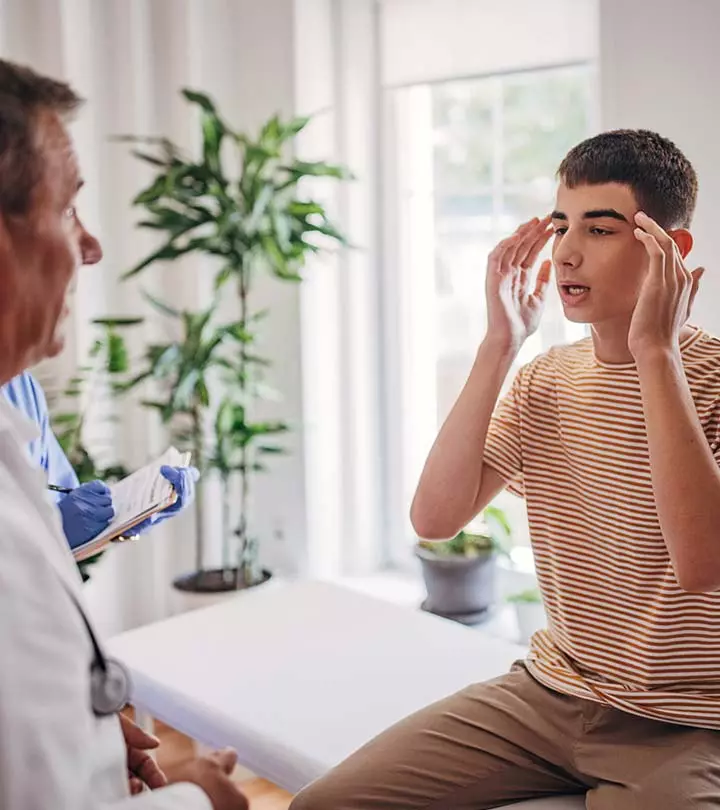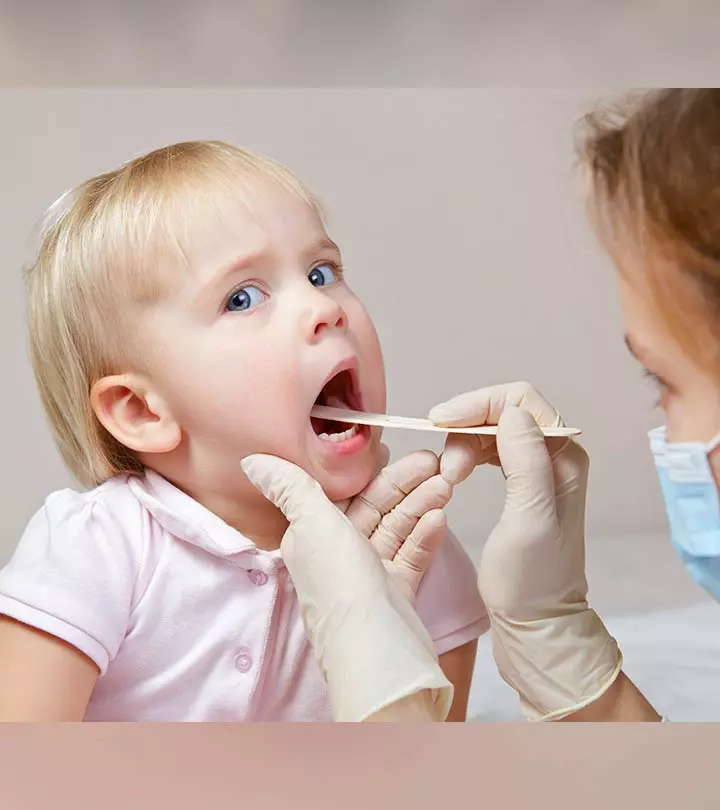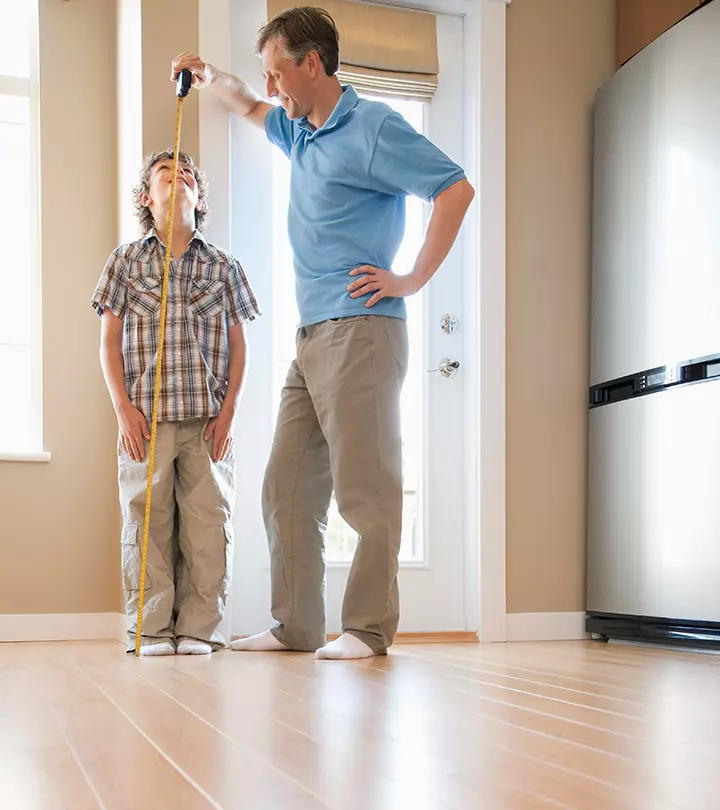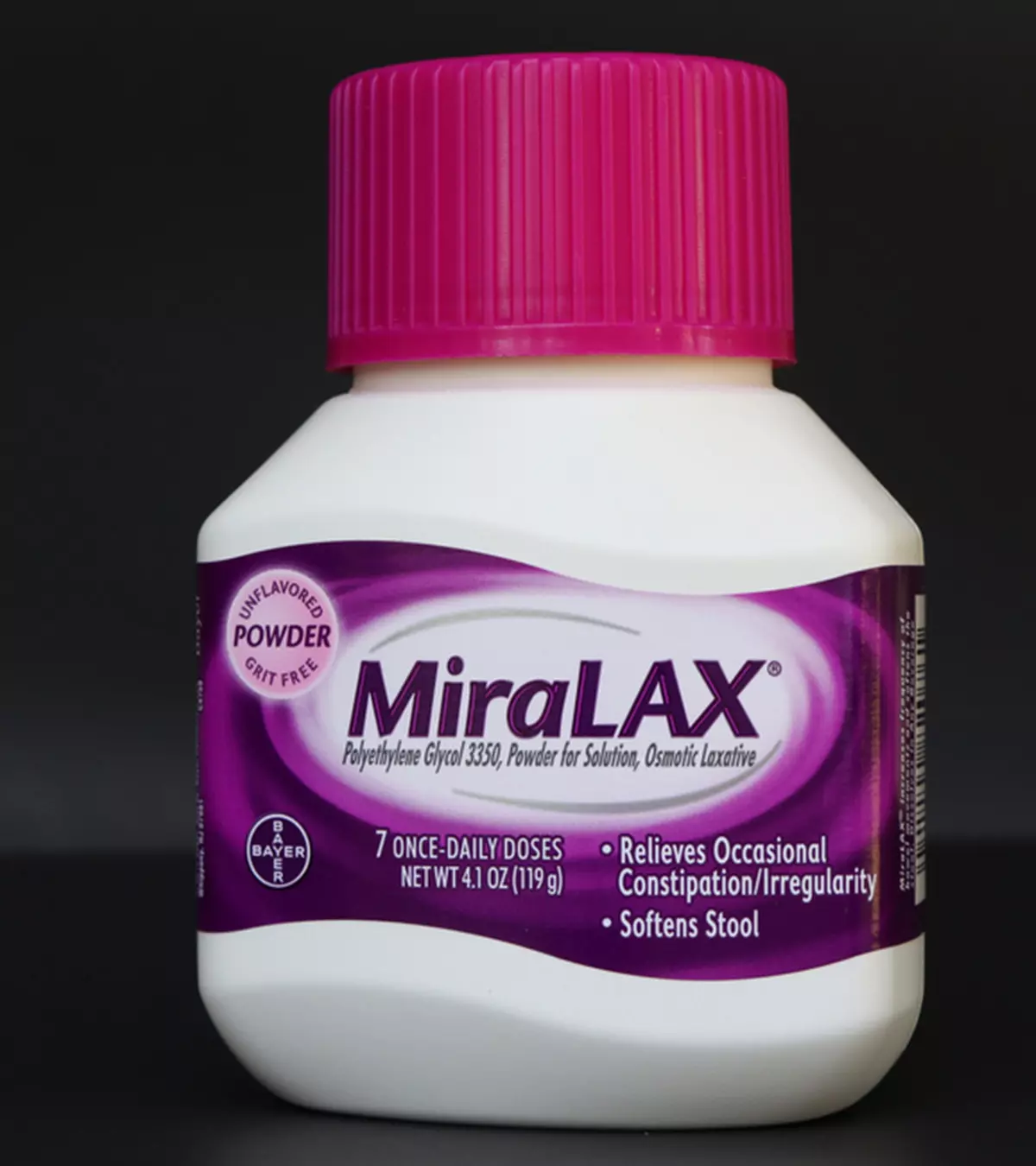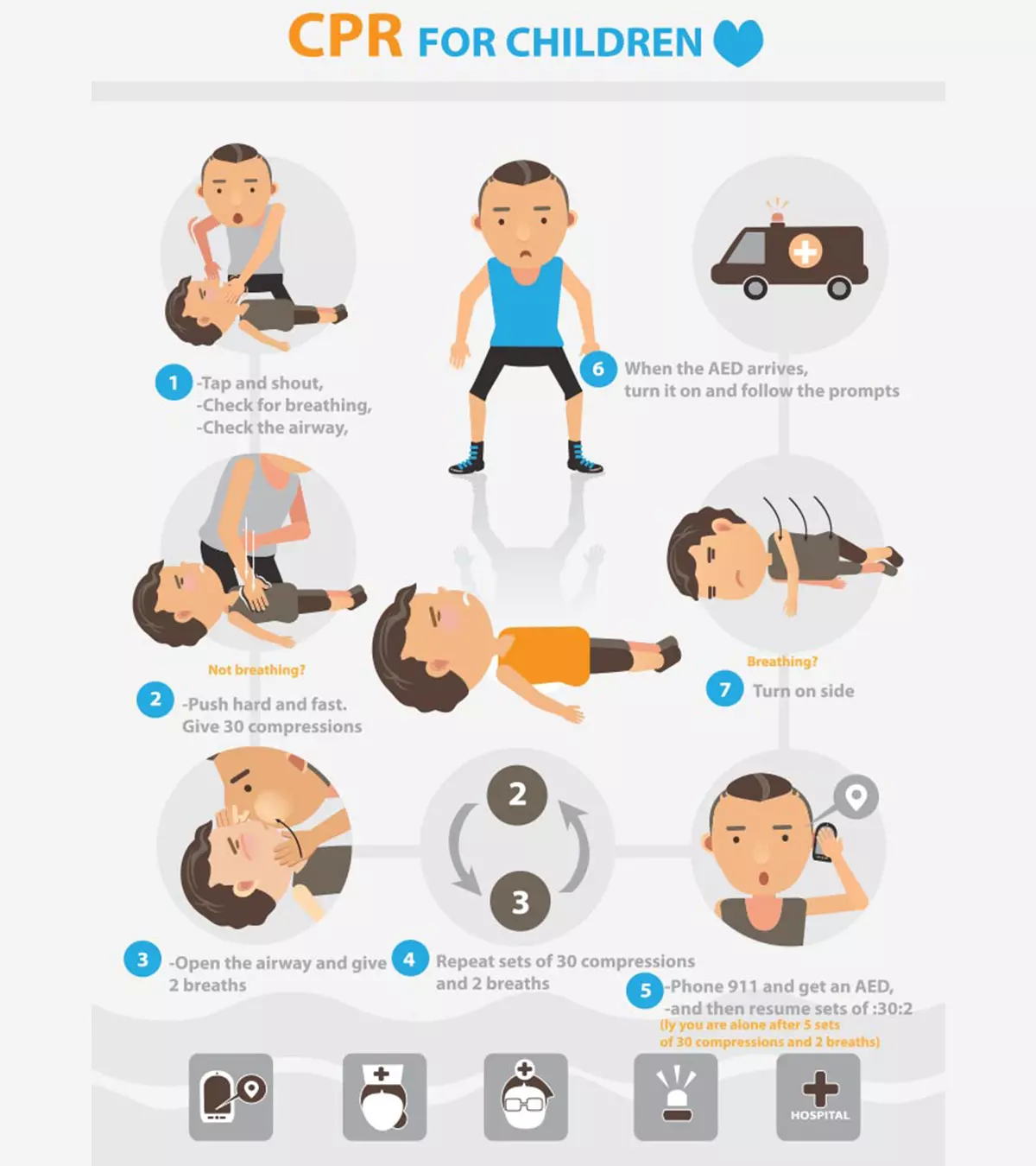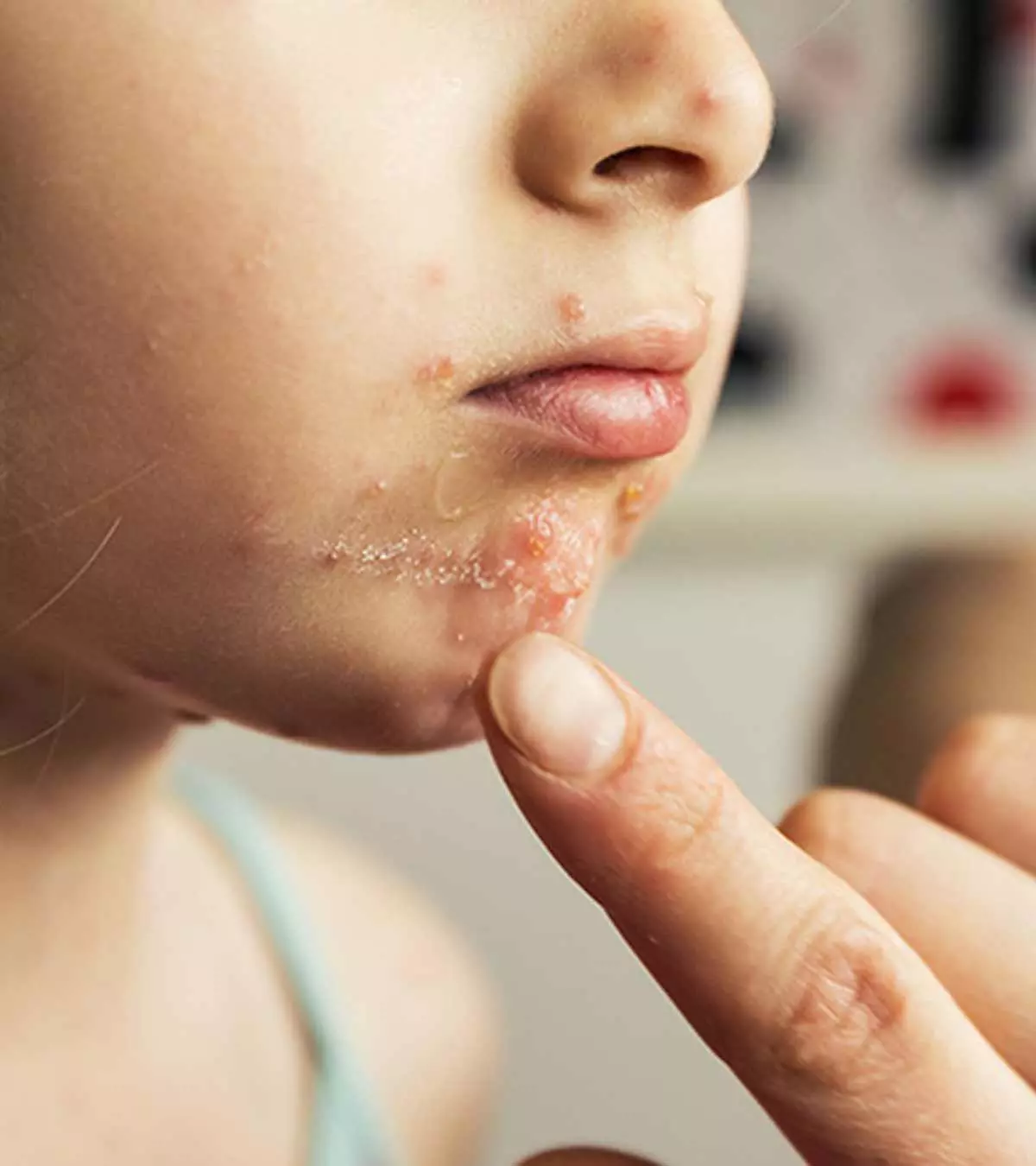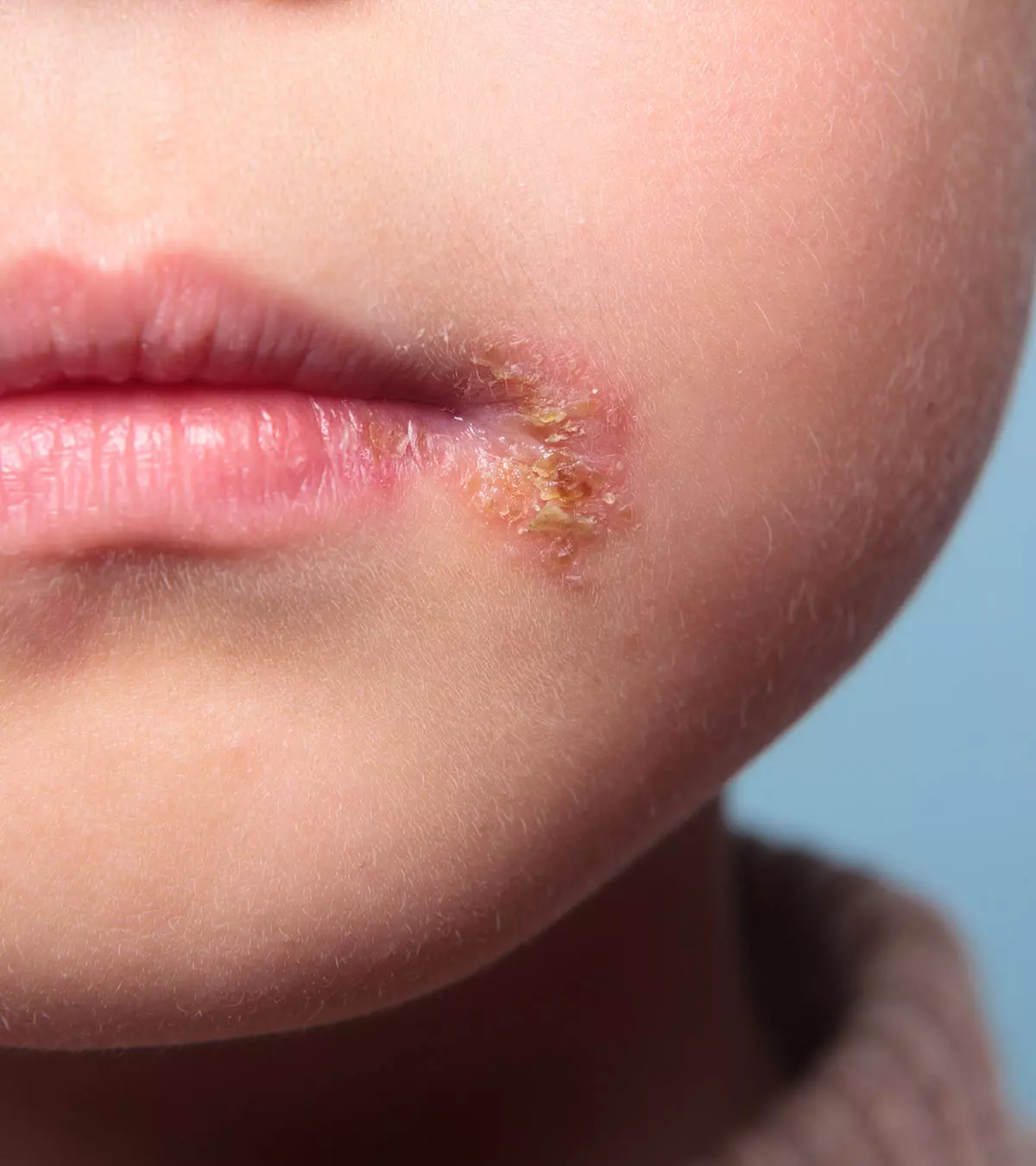
Image: Midjourney/ MomJunction Design Team
Dark circles usually happen due to lack of sleep and nutrition. However, dark circles under a child’s eyes may be due to other reasons as well. Dark circles are less common in children than in adults but can result from genetic factors or conditions such as allergies, rubbing, and sleep troubles (1). Dr. Cindy Gellnar, a board-certified physician in her interview transcript to the University of Utah (2), says, “Dark circles under the eyes in children could be due to nasal congestion and genetics.” While children can develop dark circles for various reasons, they may not always indicate serious health issues.

Read this post to learn more about the causes, risk factors, complications, and treatment of dark circles in kids.
Key Pointers
- Nasal congestion, allergic rhinitis, asthma, genetics, and other factors can cause dark circles in children.
- Treating the underlying cause can help reduce dark circles in children.
- Avoid skin-lightening creams as they can harm a child’s delicate skin.
- Preventive measures include avoiding allergens, treating asthma and sinus infections, and ensuring proper diet and sleep.
- Seek immediate medical attention if the dark circles resemble bruises, occur suddenly, or if the child has other medical conditions.
What Causes Dark Circles Under A Child’s Eyes
Dark circles usually form when the veins under the eyes constrict, with decreased blood flow, causing hyperpigmentationiThe darkening of an area of skin due to an increase in melanin production , or thinning of the skin around the eyes enlarge and become dark. As the skin under the eyes is thin, it might not be able to conceal them and hence looks dark and pigmented. Under eye dark circles in kids can be caused by a variety of factors such as malnutrition due to a poor diet and stress and anxiety. In rare cases, blood or other fluids may accumulate in the grooves of the eye, creating the appearance of bags under the eyes; this condition is known as shiners (3).
Identifying the underlying cause and addressing it can help reduce the appearance of undereye dark circles in kids. Here are a few possible causes for dark circles under the eyes in children:
1. Nasal congestion: Prolonged congestion of mucous membranes (in the case of sinus infections) of the nasal cavities might exert pressure on the veins under the skin and restrict the blood flow in them, resulting in dark circles under the eyes. Studies state that children with dark circles are also found to be persistent mouth-breathers, which may increase the risk of developing dental abnormalities (4).
 Quick fact
Quick fact
2. Allergic rhinitis: Dark circles could be due to prolonged allergies. Nasal congestion caused by allergies may, in turn, result in dark circles. Allergic rhinitis could be triggered by airborne elements such as dust, pollen, animal dander, or molds. The dark circles due to allergic rhinitis are known as allergic shiners. A study published in the Journal of Allergy and Clinical Immunology looked at 126 children with allergic rhinitis and 123 healthy children. Of the children with allergic rhinitis, 82% (103 participants) completed at least four assessments. The study found that children with allergic rhinitis had darker and larger dark circles, also known as ‘shiners,’ compared to healthy children (3).
- Denni morganiSmall lines under the lower eyelid lines
- Upturned nose
- High arched palateiThe roof of your mouth
- CobblestoningiThe appearance of raised, irregular bumps on the lining of the pharynx caused by inflammation of the pharynxiThe soft area at the top of the throat where the nose and mouth passages meet
- Persistent breathing through the mouth
- Rubbing the nose persistently, with a nasal crease
- Sniffing and clearing of the throat (5)
3. Asthma: According to the Asthma and Allergy Foundation of America, dark circles under the eyes could be an early warning sign for asthma
iA chronic lung condition where the airways tighten and swell, making breathing hard (6). Also, prolonged allergic rhinitis could be linked to asthma (5). Other prominent symptoms and signs of asthma include:- Coughing worse at night, early morning, and during exercise
- Changes in breathing and sputum
- Difficult breathing
- Sneezing
- Feeling of tiredness and weakness
- Tightness in chest
- Prolonged congested nose
- Hoarseness in the voice
- Paleness
4. Genetics: If your child is not showing any abnormal signs but still has dark circles, then it could be hereditary. Research states that dark circles could be genetic, with some having them mildly and some heavily (7).
5. Snoring: Dark circles under the eyes often occur when the veins around the eyes swell and darken, which can happen when the nose is congested (2). Snoring in children is often due to enlarged lymph nodes called adenoidsiA tissue area located at the back of the throat, behind the nose . These adenoids are located at the back of the nasal passages above the tonsils. When adenoids are large, they may cause snoring, frequent mouth breathing during sleep, and a blocked nose, which may result in dark circles under the eyes (8) (9).
6. Anemia: There isn’t enough evidence to establish a direct link between anemiaiA condition where the body lacks enough healthy red blood cells or hemoglobin to deliver oxygen to tissues and dark circles in children. While anemia is considered one of the potential causes of dark circles in adults, it may not be the case for children due to differing underlying factors.
However, if your child looks pale and has dark circles under their eyes, it is vital to speak with your child’s doctor to check for anemia (10) (11).
7. Other causes: Sometimes, dark circles or swelling under the eyes might also occur due to forehead, nose, or face surgery, eating salty meals (due to fluid retention) or neuroblastomaiCancer that develops from immature nerve cells (3) (12). Dark circles can also happen due to:
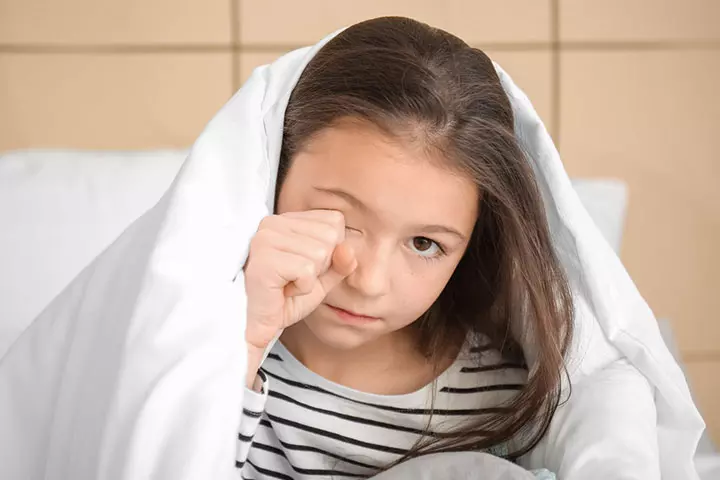
- Hyperpigmentation is due to increased melaniniA substance in your body responsible for producing pigmentation in hair, eyes, and skin production of both the epidermis and the dermis
- Dehydration following severe diarrhea and vomiting
- Non- accidental injury
- Illness and medication
- Hormonal imbalances and thyroid problems
- High salt intake and poor blood circulation
 Did you know?
Did you know?Dr. Yuna Rapoport, MD, MPH, a board-certified ophthalmologist from New York, says, “Most of the time, it is normal for dark circles to exist. However, you should be concerned and seek medical care if the dark circles look more like bruising, if they came on suddenly, and if your child is having other medical issues like nausea or vomiting. Most of the time, the causes of under eye circles in children are the same as that in adults: fatigue, dehydration, or a cold.”
Pediatrician Dr. Raashid Hamid says, “In most cases, dark circles in children are temporary and improve with adequate sleep, proper hydration, and addressing any underlying allergies. If dark circles persist or are accompanied by other concerning symptoms, it’s advisable to consult a pediatrician for further evaluation.”
If your child is not showing any of the above abnormal symptoms but still has dark circles, then monitor their sleep and iron levels as they may be contributing to the formation of dark circles around their eyes. In any case, the doctor will look for other symptoms that might help identify the cause.
Treatment For Dark Circles Under Eyes In Children

Dark circles under a child’s eyes may not need treatment, as they might subside when the underlying cause is treated. Here are a few precautions you could take to prevent dark circles.
- If the nasal congestion is because of allergies in children, identify the trigger and make sure your child stays away from it.
- Consult your doctor and follow the treatment plan if your child is diagnosed with a sinus infection or asthma.
- Treat allergic rhinitis.
- Do not apply fairness creams or skin-lightening creams as they could damage the delicate skin of your children.
- Help your child manage stress with relaxation techniques and activities they enjoy to promote overall well-being (1).
- Limit excessive screen time and ensure regular breaks to prevent eye strain, which can worsen dark circles.
- Medical expert Dr. Po-Chang Hsu says, “Sunlight triggers melanin production, leading to pigmentation in the under-eye area. Parents can help prevent this by ensuring their child wears sunglasses, applies sunscreen, and avoids prolonged sun exposure.”
- Make sure your child gets a good night’s sleep and nutrient-rich foods.
In addition to treating the underlying cause, you could consider trying a few home remedies that might help in soothing the skin around the eyes. Always do a patch test before trying these remedies on younger children, as some of them might cause irritation to the eye.
Also, there is little evidence to prove the effectiveness of these remedies. It is recommended that you consult your doctor before trying them out.
1. Almond oil: It is said to help in improving complexion and skin tone (13), so it might help in reducing the darkness around the eyes. If you are trying it, make sure the oil is pure and free of any chemicals or other dilutions.

How it is used: Put two to three drops of almond oil on a cotton swab and wipe it around the eyes, let it stay for 15 minutes, and then wash it off. Repeat this for six to seven weeks. Be careful not to apply it too close to the lower eyelid.
2. Cold compress: It is believed that a cold compress can help reduce the swelling of the blood vessels under the eye, thereby helping reduce puffiness and darkness under the eyes.
How it is used: Soak a washcloth in cold water and place it on your child’s eyes for 20 minutes. You can also wrap a few ice cubes in a washcloth and put it on the eyes. Do not make it too cold for the child to handle it.
3. Steam inhalation: This does not directly affect the dark circles but provides relief from nasal congestion. You may try steam inhalation to clear out the stuffy nose. Steam inhalation could worsen asthma, so avoid it if you think it might trigger an asthma attack.
How it is used: Encourage your child to take steam baths or help them inhale some warm air from a steamer to relieve nasal congestion.
4. Cucumber: High levels of vitamin K and lignansiPhytochemicals found in plant-based foods, highest in flax seeds and may have anticancer properties in cucumbers are said to help reduce dark circles and inflammation (14).
How it is used: Crush the cucumber and extract the juice. Soak cotton pads in the juice, place them on your child’s eyes, and ask them to rest for 15 minutes. Repeat this thrice a week.
5. Saffron: Saffron is said to have anti-allergic, and anti-inflammatory properties (15), thus it might help in reducing allergic reactions as well as the dark circles in children.

How it is used: Blend together some saffron in a teaspoon of raw milk and apply it under the eyes; wash it off after 15 minutes. Do this thrice a week. You may also include saffron in small quantities in the milk that your child consumes. However, make sure your child is not allergic to saffron and only add a pinch of it.
6. Milk cream: This is believed to moisturize the skin naturally and reduce dark circles and bags under the eyes (16).
How it is used: Apply milk cream under the eyes and leave it for 15 minutes before washing it off. Repeat this thrice a week. Do not apply it too close to the lower eyelid as it may enter the eyes and cause irritation.
7. Potato juice: This is said to be a rich source of vitamin C and might help in nourishing the skin under the eyes.
How to: Crush potatoes and extract the juice, apply it under your child’s eyes, but not too close to the eye. Wash it after 15 minutes. Repeat it twice or thrice a day.
 Point to consider
Point to considerThese home remedies are meant to work superficially and not on the underlying cause for the dark circles. Hence these should only be used in conjunction with the prescribed treatment for your child’s condition if any.
What Are The Risk Factors And Complications Of Dark Circles?
Dark circles may not pose any risk to your child’s health, but the underlying cause may have complications. So, it is important to identify and treat the underlying condition, which can be diagnosed based on other symptoms. In the case of severe conditions, such as allergic rhinitis and asthma, consult your doctor and follow the prescribed treatment plan, as some of the underlying causes could be a precursor to emergencies such as anaphylacticiA severe and potentially life-threatening allergic reaction to possible triggers shock or an asthma attack.
 Quick fact
Quick factHow To Prevent Dark Circles In Children
To prevent dark circles in children, consider the following steps:
- Adequate sleep: Ensure your child gets enough rest, as lack of sleep contributes to dark circles (1).
- Hydration: Keep your child hydrated to prevent puffiness and dark circles (1).
- Sun protection: Use sunscreen to protect their skin from UV damage and avoid darkening around the eyes (1).
Ensure your child consumes a balanced diet to ensure their overall health and well-being.
Frequently Asked Questions
1. What deficiency causes dark circles in children?
Contrary to popular belief, dark circles in children are not caused by iron deficiency, anemia, or vitamin deficiency (2).
2. Will reducing screen time reduce dark circles in children?
Screen exposure for a long time may cause sleep disturbances in children (17). It may, in turn, lead to dark circles due to insufficient sleep.
3. Are dark circles in children related to liver issues?
Dr. Rapoport observes, “In children, it is unlikely for liver issues to be the cause of dark circles.”
4. Can stress cause dark circles under the eyes in children?
Stress might contribute to dark circles in children, similar to its effects in adults. Although specific studies linking stress directly to dark circles in children are limited, it remains a plausible factor. Stress disrupts sleep patterns, leading to fatigue, which can cause the skin under the eyes to darken due to increased blood flow and dilation of blood vessels (1).
5. Can excessive crying and rubbing the eyes cause dark circles?
Excessive crying and rubbing of the eyes vigorously may lead to the development of dark circles in children. Rubbing irritates and inflames the delicate skin around the eyes and can break blood vessels under the skin, making the area look darker (1).
Dark circles under a child’s eye can be treated with the help of proper sleep and nutritious food. You could also use specific home remedies such as cold compress or applying almond oil to the area under the eyes but refer to the doctor beforehand to ensure they are safe and do not lead to complications. If dark circles persist even after the home remedies, it is advised that you consult a doctor or pediatrician at the earliest to find out about the underlying cause and get medical care as soon as possible.
Infographic: Possible Causes Of Dark Circles Around Children’s Eyes
Although not very common, children may develop dark circles, which may be due to exhaustion, sleeplessness, genetics, and other factors. They usually resolve once the specific cause is identified and treated. The infographic below explains the possible reasons for dark circles in children. Illustration: Momjunction Design Team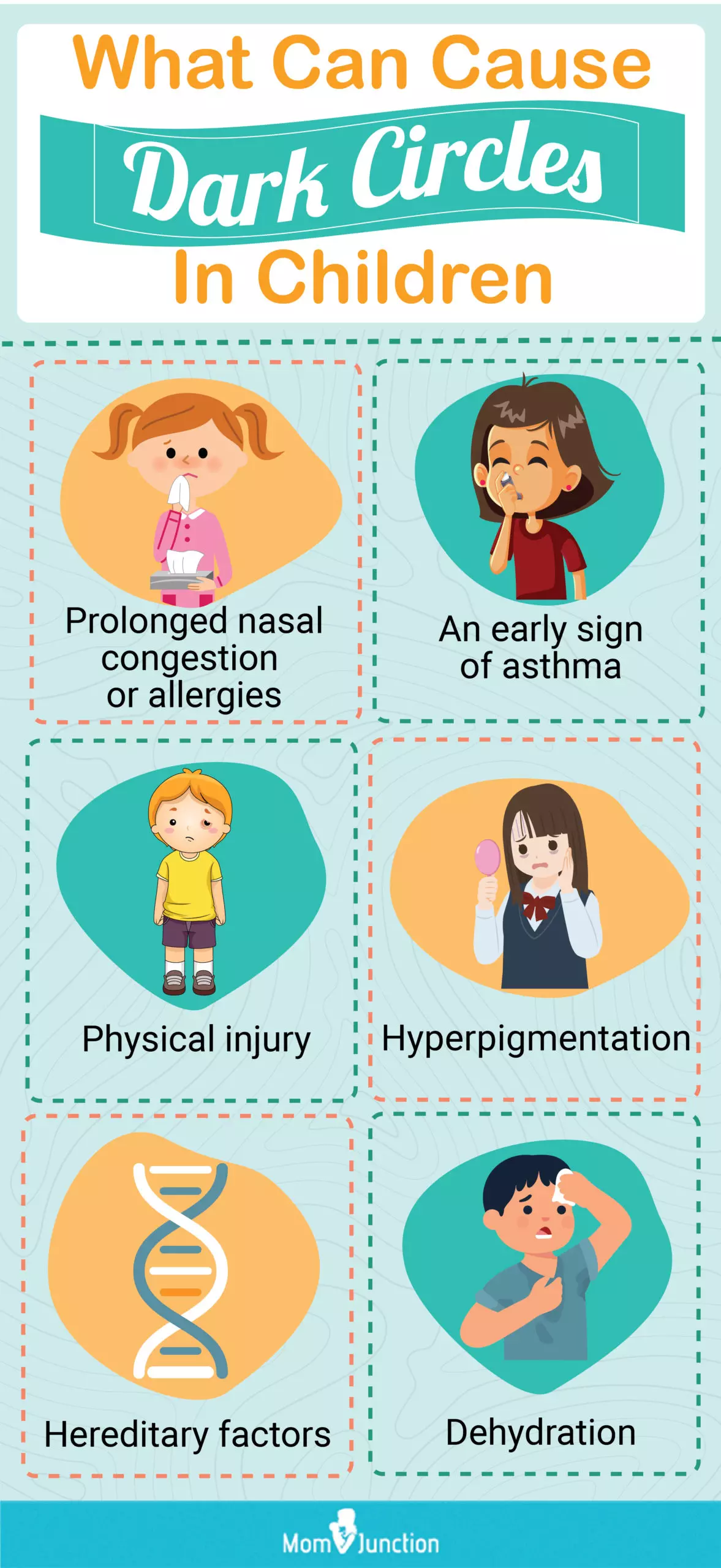
Illustration: What Causes Dark Circles Under A Child&039s Eyes And How To Treat Them?
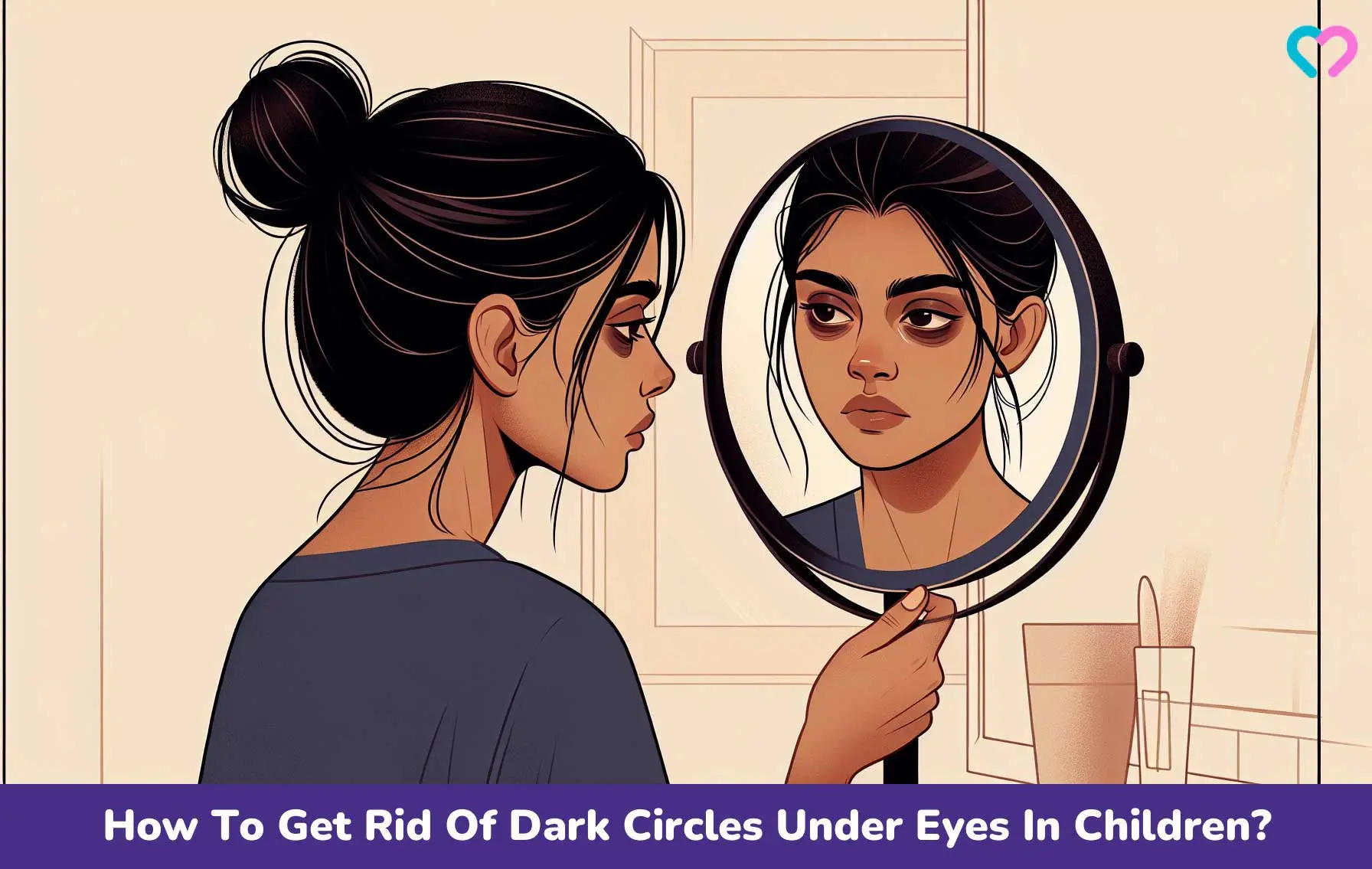
Image: Dall·E/MomJunction Design Team
Children sometimes get dark circles and this strange sight may make you wonder why this occurs. Learn why this is happening and how to help in this informative video.
References
- Dark Circles Under the Eyes; Cleveland Clinic
- What Are Those Dark Circles Under My Child’s Eyes?; University of Utah
- Chien-Han Chen, et al.; Quantitative assessment of allergic shiners in children with allergic rhinitis; The Journal of Allergy and Clinical Immunology
- Meyer B. Marks, Allergic Shiners Dark Circles Under the Eyes in Children; Clinical Pediatrics
- Peter Small, Paul K. Keith, and Harold Kim; Allergic rhinitis; Practical guide for allergy and immunology in Canada 2018
- Knowing and Treating Your Early Warning Asthma Signs Can Reduce the Need for Emergency Room Visits; Asthma and Allergy Foundation of America
- Rashmi Sarkar, et al.; Periorbital Hyperpigmentation: A Comprehensive Review; The Journal of Clinical and Aesthetic Dermatology
- Snoring In Children; Sleep Foundation
- Mandip Kang et al.; Trends in Diagnosing Obstructive Sleep Apnea in Pediatrics; Children
- Dark Circles Can Arise From Health Issues, Lifestyle or Genetics; UCLA Health
- Anemia; Boston Children’s Hospital
- Neuroblastoma; Medline Plus; US National Library of Medicine
- Zeeshan Ahmad; The uses and properties of almond oil; Complementary therapies in clinical practice
- H. Murad; Evaluating The Potential Benefits Of Cucumbers For Improved Health And Skin Care; The Journal of Aging Research and Clinical Practice
- Anna Poma, Gabriella Fontecchio, Giuseppe Carlucci, and Giuseppe Chichiricco; Anti-inflammatory properties of drugs from saffron Crocus. Antiinflamm Antiallergy Agents Med Chem; Anti-Inflammatory & Anti-Allergy Agents in Medicinal Chemistry
- Thanya Promsorn; Development Of Herbal Facial Mask Cream From Suan Sunandha Palace Facial Beauty; International Journal of Advances in Science Engineering and Technology
- Screen Time Insomnia; Children’s Health Orange County
- Dark Circles Under the Eyes; Tufts Medical Center
Community Experiences
Join the conversation and become a part of our nurturing community! Share your stories, experiences, and insights to connect with fellow parents.
Read full bio of Dr. Denise Chevonne Parris (Harding)
- Dr. Raashid Hamid is a consultant in the department of Pediatric Surgery at GMC hospital and associate professor of Pediatric and Neonatal Surgery at SKIMS, Jammu & Kashmir, India. He has four years of experience and specializes in general surgeries, including appendectomy, cholecystectomy, and exploratory laparotomy.
 Dr. Raashid Hamid is a consultant in the department of Pediatric Surgery at GMC hospital and associate professor of Pediatric and Neonatal Surgery at SKIMS, Jammu & Kashmir, India. He has four years of experience and specializes in general surgeries, including appendectomy, cholecystectomy, and exploratory laparotomy.
Dr. Raashid Hamid is a consultant in the department of Pediatric Surgery at GMC hospital and associate professor of Pediatric and Neonatal Surgery at SKIMS, Jammu & Kashmir, India. He has four years of experience and specializes in general surgeries, including appendectomy, cholecystectomy, and exploratory laparotomy. - Dr. Yuna Rapoport is a board-certified and fellowship trained ophthalmologist, who did her medical degree at Northwestern University and ophthalmology residency at Vanderbilt Eye Institute in Nashville, Tennessee. She then obtained additional training as a corneal and refractive surgery fellow from the Massachusetts Eye and Ear Infirmary of Harvard Medical School. Dr. Rapoport has been in private practice in New York City for over five years.
 Dr. Yuna Rapoport is a board-certified and fellowship trained ophthalmologist, who did her medical degree at Northwestern University and ophthalmology residency at Vanderbilt Eye Institute in Nashville, Tennessee. She then obtained additional training as a corneal and refractive surgery fellow from the Massachusetts Eye and Ear Infirmary of Harvard Medical School. Dr. Rapoport has been in private practice in New York City for over five years.
Dr. Yuna Rapoport is a board-certified and fellowship trained ophthalmologist, who did her medical degree at Northwestern University and ophthalmology residency at Vanderbilt Eye Institute in Nashville, Tennessee. She then obtained additional training as a corneal and refractive surgery fellow from the Massachusetts Eye and Ear Infirmary of Harvard Medical School. Dr. Rapoport has been in private practice in New York City for over five years. 
Dr. Po-Chang Hsu is a medical doctor and medical content expert. He received his medical degree from Tufts University School of Medicine in Boston in 2016. Previously, he did a master’s degree at Harvard University and wrote a thesis on neuroimaging in schizophrenia patients at Brigham and Women’s Hospital. He currently works at Alpas Wellness.
Dr. Po-Chang Hsu is a medical doctor and medical content expert. He received his medical degree from Tufts University School of Medicine in Boston in 2016. Previously, he did a master’s degree at Harvard University and wrote a thesis on neuroimaging in schizophrenia patients at Brigham and Women’s Hospital. He currently works at Alpas Wellness.
Read full bio of Dr. Ritika Shah
Read full bio of Swati Patwal
Read full bio of Ghazia Shah







